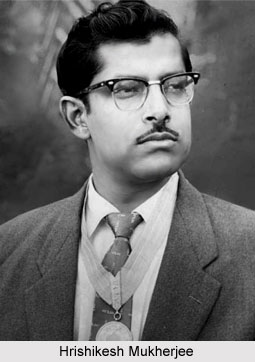 History of Hindi cinema dates back to the days when movies were born in India. In fact the Hindi cinema is seen as a unique, inimitable brand of cinema that is a fictional world where the heroes are handsome and righteous, heroines are ethereally pretty and virtuous and villains are venal and wily. They are supported by an elaborate support cast of mother figures, patriarchs, siblings, friends, henchmen, bumbling fools, and others. They break into song, dance and laughter just as easily as they weep, howl and pour their hearts out.
History of Hindi cinema dates back to the days when movies were born in India. In fact the Hindi cinema is seen as a unique, inimitable brand of cinema that is a fictional world where the heroes are handsome and righteous, heroines are ethereally pretty and virtuous and villains are venal and wily. They are supported by an elaborate support cast of mother figures, patriarchs, siblings, friends, henchmen, bumbling fools, and others. They break into song, dance and laughter just as easily as they weep, howl and pour their hearts out.
It was Dhundiraj Govind Phalke who inaugurated Indian cinema with Raja Harishchandra, the first film in India to be shot with an entirely Indian crew, which was based on a mythological tale. A string of films based on Indian mythology followed. Later historical epics, legendary romances, and filmed biographies, the other principal genres emerged in 1930s and 1940s.
In the late 1940s and through the 1950s, Italian neo-realism and the activities of the leftist Indian Peoples` Theatre Association (IPTA) influenced Hindi cinema, as seen in the works of radical writer-filmmakers such as K.A. Abbas {Dharti Ke Lai), lyricists such as Sahir Ludhianvi, and directors such as Chetan Anand (Neecha Nagar), Bimal Roy (Do Bigha Zameen), and Zia Sarhadi (Footpath).
 However by the 1960s, Hindi cinema shifted its focus from social concerns to a spate of romantic musicals, initially propped up by such new stars as the dashing Shammi Kapoor, whose flashy acting and dancing style represented Hindi cinema`s first serious attempts to woo a westernized youth segment and then by a less flamboyant but equally charismatic Rajesh Khanna.
However by the 1960s, Hindi cinema shifted its focus from social concerns to a spate of romantic musicals, initially propped up by such new stars as the dashing Shammi Kapoor, whose flashy acting and dancing style represented Hindi cinema`s first serious attempts to woo a westernized youth segment and then by a less flamboyant but equally charismatic Rajesh Khanna.
In the 1970s, middle-class filmgoers found an alternative in the middle-of-the-road cinema spearheaded by the likes of Hrishikesh Mukherjee, Basu Chatterjee, Basu Bhattacharya and Gulzar. Alongside another superstar emerged on the screen of Hindi cinema, Amitabh Bachchan. With the passage of time the history of Hindi cinema witnessed the birth of new stars on its horizon. Aspirants from different parts of Indian came to Mumbai to try their luck but only few could survive to become the most sought after Bollywood actors or Bollywood actresses.
In the early 1980s while the Indian Commercial Cinema was still entertaining the audiences a bunch of directors decided to portray reality on screen and thus the Indian Art Movies emerged. However with time this difference slowly blurred as audiences appreciated both the genres.
In the late 20th century Hindi cinema developed as an alternative mode of entertainment for the educated urban elite. The advent of sponsored serials on television and then the arrival of satellite channels meant that commercial cinema lost a sizeable chunk of its middle-class audience. However, musical, romantic family dramas such as Hum Aapke Hain Kaun, Dilwale Dulhaniya Le Jayenge and Kuch Kuch Hota Hai, coupled with the rapid spread of state-of-the-art multiplexes in India`s big cities, brought the well-heeled crowds back to the cinema halls. It is films like these for which the Bollywood Directors are often called `dream merchants` or showmen.
As Indian stepped into the Jet age Hindi cinema once again underwent a change. Besides the `candyfloss` films a set of directors once again turned to realism. This time they made such films by remaining within the parameters of commercial cinema. Whether it was the characterization, the dialogues, the story, the costumes or the locales these films re-enacted reality on screen. Films like Dil Chahta Hai, Swadesh, Chak De, Rock On and others rocked the box office.
Music and songs have always played an important role in the Hindi films. According to the history on Hindi cinema, it was quite common for a Bombay feature film to have up to 40 songs! Songs serve a range of purposes in the narrative design of a Hindi film. Apart from emphasizing Mumbai cinema`s links with Indian folk theatre and less directly with European operatic traditions, they convey the various swings in moods that a mainstream Hindi film seeks to convey through its running time. The importance of song and dance in films can be easily gauged by the success of the musical romances. a bunch of talented Bollywood lyricists and musicians have helped the Hindi films with their music.
The Hindi film industry is often referred to as the Bollywood. According to the history of Hindi cinema this term evolved in the early 1980s. Bollywood was definitely derived from Mumbai. Although at times filmmakers, actors and technicians refused to accept the word but it gained popularity outside India. Hence even today Bollywood remains synonymous with the Hindi film industry.
More on Hindi films:






